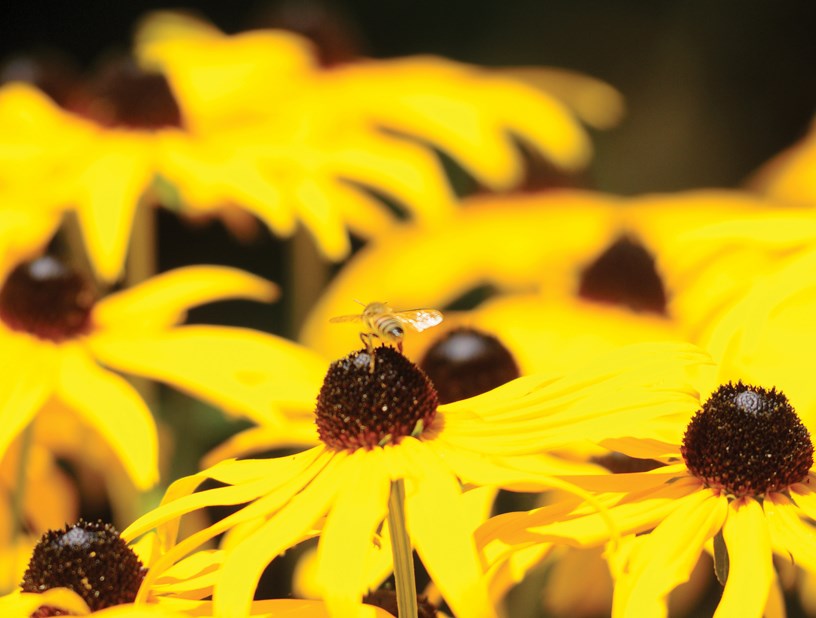Summer is the season of the perennial plant and August is usually one of the most beautiful months for flowering perennials.
This year however, flowering cycles in the garden are a little out of the ordinary. There's still plenty of bloom in the garden but my montbretia (Crocosmia species) is already done and the fennel (Foeniculum) that normally blooms now is also mostly finished. September's floral show may be a little lean if things hold true to this year's form. Right now, however, many perennials need a little tidying up to keep them looking good for the rest of summer. For perennial plant enthusiasts, summer culture dictates regular, ongoing husbandry to keep plants looking good. Aside from watering, perennials
benefit from several in-season maintenance techniques. For example, summer mulching of perennials is not widely done by most people but applying five to eight centimetres of bark mulch, composted bark, coarse peat moss, wood chips or straw will protect perennial plant roots from drying in the sizzling heat. Summer mulching, or dressing as it is sometimes called, is useful for organically feeding perennials using manure or compost to provide slow release nutrients the plants will use for winter storage.
When it comes to feeding perennials, if I had to choose between chemical fertilizers, or dressing with manure or compost, I would use compost, simply because organic amendments like manure and compost build long-term soil structure, a benefit that no chemical fertilizer can claim.
Another way to keep perennials looking fresh in summer is to regularly deadhead, clip or shear as needed.
It's not easy to give "one direction fits all" kind of advice on how to deadhead perennials. Much depends on whether or not the plant is a self-seeder. Not all gifts from the garden are welcome, especially self-seeded gifts. For example, fennel, foxgloves (Digitalis species), some daisies, yarrow (Achillea) and montbretia should be deadheaded soon after flowering to prevent self-seeding all over the garden. Other plants are best left to produce seeds for the birds of fall. Coneflowers (Echinacea), black-eyed Susan (Rudbeckia), blanket flower (Gaillardia) and several other perennials produce seed that is edible and favoured by birds. But the naturalized look - leaving seed heads on for birds and visual interest - is not enjoyed by everyone who grows perennials. In my garden, I leave as many seed heads as possible as long as the plant is not prolifically self-seeding and the seed-head looks reasonably attractive.
Clipping and shearing of perennials refers to the use of hand-shears or power-shears to cut off dead flowers. Aside from preventing the plant from putting energy into seed production, deadheading also cleans up presentation, a key part of growing perennials.
Some perennials like hardy perennial geraniums can be sheared to remove all old flowering stems which results in a clean appearance and possible re-flush of flowers a few weeks later. By contrast, phlox is not generally sheared; instead the entire flower is cut off below the flowering head but above a good set of leaves on the stem. Never deadhead multi-flowered heads, meaning if the flower blooms one or two at a time gradually until all flowers on the same stalk are borne, then leave the entire flower stalk to bloom before deadheading.
Another useful summer trick for controlling the size of perennials without digging them out of the ground is called "thinning in place." This method involves pulling, digging or cutting off individual portions of the plant's crown to reduce the size of the plant. This is helpful for the mid-summer re-balance of size, proportion and scale in the perennial garden.
For montbretia you can simply pull individual corms out of the ground by pulling hard on the stem just above the ground. For phlox, hostas, bee balm (Monarda), yarrow and many other perennials, you simply reach down into their crowns with a hand pruner and cut off entire portions of the plant's crown to reduce size. It is highly effective and a real labour-saving technique if you have a lot of perennials or little time to dig and divide perennials in fall or winter. Be careful not to overdo the thin in place technique
because you can kill a perennial if you are too aggressive.
One final note about perennial plant care in summer - don't be too critical of the late summer appearance of many perennials. Yes they should be deadheaded and cleaned up but avoid being too fastidious. Plants are not granite countertops,
so don't apply the same standards of cleanliness. A little mulch, some deadheading and a bit of water is all that is needed to keep them looking good well into fall.
Todd Major is a journeyman horticulturist, garden designer and builder, teacher and organic advocate. Contact [email protected]



